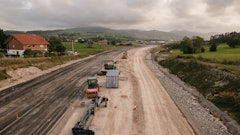Most construction sectors have experienced growth over the past several years given total construction activity’s steady rise. Such expansion historically generates a bump in construction materials costs as demand for everything from fuel to steel expands.
While such cost increases are to be expected, there are aggravating circumstances that threaten to drive prices higher, and at an accelerated pace. “A confluence of factors will likely continue to push materials prices higher in the months to come,” states Anirban Basu, chief economist, Associated Builders & Contractors (ABC). “These factors include global monetary policy, which continues to help accelerate growth in much of the world, a strong U.S. construction market and a policy-making environment that has impacted the price of softwood lumber, steel and aluminum.”
The Trump administration’s unanticipated announcement in late February of a 25% tariff on steel imports and 10% on aluminum set much of Wall Street into a tailspin. While the stock market has largely recovered, and a trade war has thus far been averted, the full national and global implications of the tariffs and other trade restrictions on U.S. businesses and consumers remain to be seen.
Yet, the construction industry — which consumes 40% to 50% of steel production — has already begun to feel the effects. Prices were up for lumber, steel and aluminum even before the latest tariffs were announced, notes Ken Simonson, chief economist, Associated General Contractors of America (AGC). “Steel service centers and other suppliers are warning there is not enough capacity at U.S. mills or in the trucking industry to deliver orders on a timely basis,” he points out. “Thus, contractors are likely to experience still higher prices as well as delivery delays in coming months.”
In fact, the expected higher cost of imports almost immediately caused steel prices, already up 7.8% in 2017, to surge. Simonson anticipates double-digit increases to come. Such increases “could wreck the budgets for numerous infrastructure projects and private nonresidential investments.”
A report released by Moody’s Investor Services corroborates this concern, stating “the tariffs will undermine nonresidential construction spending and public construction spending due to cost increases for those projects utilizing steel... Higher costs could impede project starts, as well as consume a higher percentage of available funding, reducing available funds for future projects.”
The 21% tariff on Canadian softwood lumber imports from Canada, which went into effect in November 2017, serves as further evidence of where costs are likely to head. Prices surged early in 2017 upon news of the tariff, impacting roughly one-third of U.S. supply. According to the National Association of Home Builders (NAHB), lumber prices had risen steadily since 2015 before reaching their highest level on record in 2017 — an increase of 45% year over year.
Given the risk of sizable cost increases to come, it will be ever more critical to develop accurate estimates of future needs, and to secure fixed pricing on affected products where practical. Strict attention to cost control, coupled with the use of available technologies to enhance productivity, reduce waste and minimize rework, will also play a key role in ensuring projects retain their profitability rather than fall into the red.






























